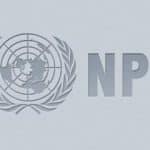- The Human Development Report is prepared by the United Nations Development Programme (UNDP).
- The concept of HDI was proposed by Pakistani Economist Mahboob Ul Haq and Indian Economist Amartya Sen in the year 1990.
- The theme for the 2015 report was: “Work” For Human Development.
- The 2015 report was launched in Addis Ababa, Ethiopia.
- The Human Development Report is based on five indices-
- Human Development Index (HDI)
- Inequality- adjusted Human Development Index (IHDI)
- Gender Development Index (GDI)
- Gender Inequality Index (GII)
- Multidimensional Poverty Index (MPI)
- HDI- The HDI is a composite index meant to compare the well-being of people across countries. It was first introduced by the UNDP in 1990. How to measure Human Development?
- It is calculated as the Geometric Mean of three indicaors:
- Life expectancy at birth
- Education
- Gross National Income (GNI) per capita
- The Geometric Mean of the above three parameters will give the HDI.
- The HDI of India for the year 2015 is 0.609.
- HDI in the range of 0.8-1.0 is considered very high. Countries like Norway, Australia, Switzerland, Denmark and Netherlands fall under this range.
- High: 0.7-0.8: Sri Lanka, Brazil, China
- Medium: 0.550-0.700: India ( Rank- 130 in 2015 which was 135 in 2014), Bhutan, Bangladesh
- Low: The last rank 188th was obtained by Niger. Nepal, Pakistan, Myanmar also fall under this category.

- Since not much improvement can be made in the life expectancy at birth ( as it is already high), to increase our ranking we must improve the education sector and the GNI.
- IHDI- As Human Development Index is a geometric mean of three parameters, so it masks the internal inequalities prevailing in a country. The inequality adjusted HDI or the IHDI comes out to be 0.435 which is less than HDI.
- The loss in Human Development because of inequality will be HDI – IHDI. It means that when inequality is factored in India loses over one-fourth of it’s HDI value, with education registering the highest inequality in outcomes.
- The average adult man in India gets twice as many years of schooling as the average adult woman.
- India’s ranking in terms of IHDI is 131 for the year 2015.
- GDI- It is the ratio of the Female HDI to the Male HDI.
- If the ratio is >1, it means that there is more development in case of women as compared to that of men. For example, countries like Estonia, Latvia and Russia have GDI > 1.
- India’s GDI for 2015 is 0.795 which implies the lesser human development of women.
- GII – it was introduced in 2010. India ranks 130 on this parameter. It will focus on three things.
- Reproductive Health of the girl child– It is measured by Maternal Mortality and Adolescent Birth Rates. Maternal Mortality Rate for India is 190 per 1 lakh live births. Adolescent Birth Rate for India is 33 per 1000 girls. So these need to be improved.
- Empowerment of the girl child– It is measured by the share of parliamentary seats held by women and attainment in secondary and higher education by gender. There are 12.2% women members of the Parliament. There are hardly 27% girls who have passed Higher Secondary School.
- Economic Activity – It is measured by the labor participation rate for women and men. Labor force participation for women is just 27%.
- MPI – It was also introduced in 2010. It identifies multiple deprivations at the household and individual level in health, education and standard of living. Each person in a given household is classified as poor or non-poor depending on the number of deprivations his or her household experiences.
- On the MPI, which measures deprivation on six indicators, over half of India’s population is multi-dimensionally poor.
- The 2015 report looks at the role of work in improving human development.
- Besides national employment strategies, the report calls for –
- a new social contract between government, society, and the private sector to ensure that all members of society have their needs taken into account in policy formulation.
- a global deal among governments to guarantee worker’s rights and benefits around the world.
- a decent work agenda, that will help promote freedom of association, equity, security, and human dignity in work life.
- The report finds that women consistently earn less than men and are less likely than men to be in leadership positions.
- The high proportion of unpaid care work that falls on them alone pushes them out of the workforce, resulting in one of the world’s lowest female labor force participation rates.
- The report highlights how vulnerable and ill-prepared for the future the majority of the Indian workforce is, and without a social protection blanket.











